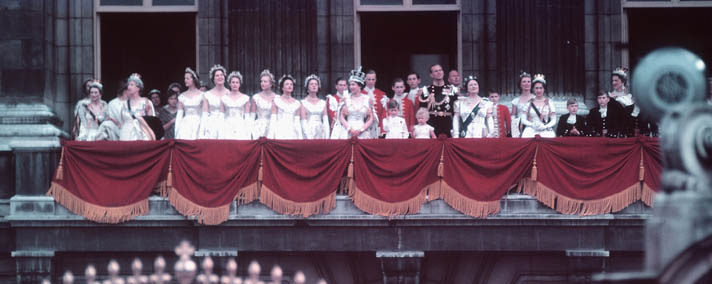
Televising the Coronation of Queen Elizabeth II was a crowning achievement!
On June 2, 1953 over eight million people watched on their own televisions, 10 million people watched in the homes of friends and family who owned TVs and 1.5 million went to cinemas, pubs and halls to view this live event.
Before this coronations were limited to those invited inside Westminster Abbey although limited footage of the crowning of King George VI was captured. But it is Prince Philip who can be credited for bringing the monarchy into modernity?
[getty src=”76087904″ width=”594″ height=”443″ tld=”com”]As discussions around Queen Elizabeth II’s Coronation began, one of Prince Philip’s first suggestions was televising the ceremony – to the consternation of many. The Queen Mother was against the idea and Prime Minister Winston Churchill is quoted as saying: “it would be unfitting that the whole ceremony, not only in its secular but also in its religious and spiritual aspects, should be presented as if it were a theatrical performance.”
Even Queen Elizabeth was not in favour of the idea at first. But once Prince Philip showed her how this was a necessary step for the monarchy to adapt and become closer to its citizens, she agreed. There was one caveat: no cameras could film the Act of Consecration. This is a sacred part of the ceremony when the Queen removed her red cloak, sat in King Edward’s chair and the Archbishop of Canterbury anointed her with blessed oil on her head, chest and hand.
When it was announced that the coronation would be televised, TV sales skyrocketed. Sir Paul McCartney shared his boyhood memory of that time, “Till then we hadn’t had a television, and me and my younger brother were always begging our parents, ‘Can we get a TV?’ well then suddenly for the coronation, everyone got one.”
McCartney went onto explain his feelings of watching the event in his Liverpool home, “we were genuinely excited because when we’d grown up, we’d had a king. And then suddenly, this young woman was having to take that job. And there hadn’t been a sort of queen in our lifetime.”
Televising live events may be common now but in 1953 it was a monumental task that had never been done. The entire day would run to seven hours of coverage. Large cameras had to be put in Westminster Abbey, microphones and cameras had to be cabled along the entire route from the Abbey to Buckingham Palace and on top of everything, it was raining.
[getty src=”3335023″ width=”594″ height=”413″ tld=”com”]There was only one channel and viewers were given an hour before the ceremony to tune their TV to the signal. Historian Robert Hewison recounted his memory of the day: “The picture wasn’t as impressive as 35mm newsreel in the cinema. It was more grey and brown than black and white. But you were seeing something live.”
Though there were no satellites or even video tapes in 1953, Queen Elizabeth II’s coronation was also one of the first events aired the same day around the world. Kinescope and newsreel films were made and rushed to Heathrow airport by helicopter and ushered onto Royal Air Force planes specifically built for developing film. These planes flew to Montreal where the film was transmitted throughout Canada and to New York for the American networks.
Televising the Coronation not only modernized the monarchy, it also modernized post-war Britain. Television became the favorite medium, shows were created specifically for TV and the idea of gathering with loved ones around the television became the norm.

